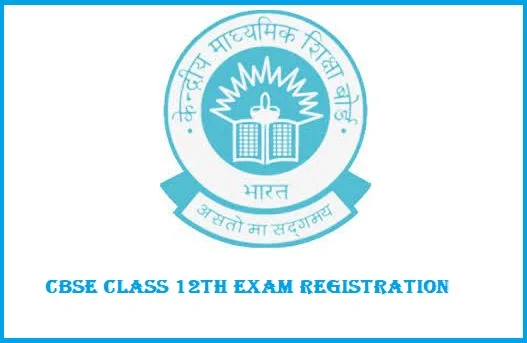LIC Jeevan Lakshya Plan (Table No. 933): Key Features, Eligibility, Benefits and Returns

LIC’s Jeevan Lakshya Plan (Table No. 933) is one of the most popular plans in LIC. As its name suggests, this plan is designed to achieve the goals set by the family. Earlier, the table number for this plan was 833, which was changed to 933 on February 1, 2020.
For complete information about the LIC Jeevan Lakshya Plan (Table No. 933), read our article till the end.
What is the LIC Jeevan Lakshya plan (Table No. 933)?
LIC Jeevan Lakshya is a non-linked plan, which means that this plan is not linked to the share market. This policy provides both savings and protection to the insured. A limited premium plan means the policyholder has to pay 3 years less in premium than the chosen policy term.
This is a “with profit plan” under which LIC provides its profit as a bonus to the policyholder.
There are two types of bonuses here.
- Simple reversionary bonuses:
LIC announces a vested simple reversionary bonus every year. The amount of the bonus can also change every year. This bonus is given on top of your sum assured. For every Rs. 1,000 assured, a bonus of Rs. 1,000 is declared. So let’s say your sum assured is Rs 5 lakh and LIC has announced a bonus of Rs 40 per Rs 1,000 for your policy.
In this case, your total bonus is: 40/1,000 *5 lakh = Rs.20,000
Note that though this bonus is announced every year, you get all of it only at the maturity of the policy. You also do not get any return on this amount. This amount is simply added to your policy.
- Final additional bonus,
The final additional bonus is applicable only in the year of maturity or death. Unlike the simple reversionary bonus, this final additional bonus is not announced every year for your policy.
Let us understand with the help of an example:
- Suppose a 30-year-old person buys a Jeevan Lakshya plan (933), for a policy term of 25 years. The premium-paying term will be 22 years (25 years – 3 years).
- Suppose the policy holder dies after 5 years.
- In such a situation, the holder’s family will get Rs 50,000 (5 lakh * 10%) every year from the sixth policy year to the twenty-fourth policy year (from the 6th policy year until the 24th policy year).
- At the time of policy maturity, Rs 5.5 lakh and a bonus will also be available. Assuming a bonus of Rs.49 per 1,000 sum assured is declared in the policy every year, your maturity bonus is: 25*5 lakh/1000*49 = Rs.6.125 lakh.
- Also, assuming the final additional bonus is Rs. 200 per Rs. 1000 Sum Assured, in this case, your bonus is 5 lakh * 200/1000 = Rs. 1 lakh.
- Overall, you will get Rs 5.5 lakh + Rs 6.125 lakh + Rs 1 lakh = Rs 12.63 lakh.
Now see, if death occurs after 5 years, then your family will get:
- 50,000 every year from the sixth year to the twenty-fourth year.
- 12.63 lakhs at the policy’s maturity date in the twenty-fifth year.
Key features of the LIC Jeevan Lakshya Plan (933)
- The special feature of this plan is that if something untoward happens to the insured, all future premiums are waived. Apart from this, 10% of the sum-insured keeps on getting to the nominee of the insured every year.
- At the time of maturity of the policy, the maturity amount is also available.
- LIC’s Jeevan Lakshya Plan (933), also known as the Kanyadaan Policy.
Eligibility for LIC Jeevan Lakshay Plan (Table No. 933)
| Entry Age | Maturity Age | Policy Term | Sum Assured | |
| Minimum | 18 years | – | 13 years | 1,oo,ooo |
| Maximum | 50 years | 65 years | 25 years | No limit |
Minimum Age: To be eligible for this policy, you must be at least 18 years old. This means that this policy can be given to a policyholder who has attained the age of 18 years.
Maximum Age: The maximum age for this policy should be 50 years. This means this policy is not given to a person who is over 50 years of age.
Maximum Age of Maturity: The maximum age of maturity for this policy should be 65. This means that a 50-year-old person can offer this plan for 15 years. Furthermore, if a person is 45 years old, the policy cannot be extended for more than 20 years.
Policy Term: The minimum policy term in this plan is 13 years, and the maximum is 25 years.
Premium Paying Term (PPT): The premium paying term means the policy term in this plan is 3 years less than the policy term of the individual. That means if the policy term of the individual is 13 years, then his premium-paying term will be 10 years.
Sum Assured: The minimum sum insured under this policy is Rs 1,00,000. There is no maximum limit, but it depends on the income of the insured.
Benefits of the LIC Jeevan Lakshya Plan (933)
Premium Benefit: Any premium you pay for this policy is exempt under section 80C of the Income Tax.
Death Benefit: The amount of the death benefit in this policy is fully exempt under section 10 (10D) of income tax.
On the death of the policy holder, the nominee gets the following amount:
10% of the sum assured is available every year after death till one year before the maturity of the policy. The amount is paid on the policy anniversary.
Also, at the maturity of the policy, 110% of the sum assured is given. Along with this, bonuses are also given. 110% of the Sum Assured + Simple Reversionary Bonus Vested + Final Bonus
LIC Jeevan Lakshya Plan (933) Premium Payment Mode
There are four modes of premium payment under this policy. You can choose any of the modes as per your convenience.
- Monthly
- Quarterly
- Half Yearly
- Yearly
Grace Period in the LIC Jeevan Lakshya Plan (933)
- Here, “grace period” means the extra time which is available to pay the premium while all the coverage of the policy continues. That is called the grace period. If the claim comes during the grace period, then LIC will pay it.
- The grace period depends on the point at which you have taken your premium payment.
- If you have taken your monthly turn, then you get a grace period of 15 days.
- If you have changed your quarterly, half-yearly, or yearly premium payment, then you get a grace period of 30 days.
Surrender period in LIC’s Jeevan Lakshya Plan (933)
Under the Jeevan Lakshya plan, you can get the policy done after paying 2 years of premiums. But remember that surrendering the policy can result in a loss, so make this decision after thinking carefully.
Loan facility in LIC Jeevan Lakshya plan (Table no. 933)
The loan facility in this policy is available after 2 years of premium payment. The policy amount depends on the number of years the policy has run and its surrender value.
- 90% of the loan surrender value is available for Inforce policy.
- The loan for a paid-up policy is 80% of the surrender value.
Revival of Jeevan Lakshya Plan-933
Policy revival means the discontinued policy has to be revived. For example, if you have paid premiums for your policy for a few years and stopped paying later, how long can you get it revived? There is a revival time of five years under this policy, in which you can get your total premium and late fee started by depositing them together.
Paid up Value in LIC Jeevan Lakshya Plan-933
For this policy, the premium has been fully paid for 2 years. If, for any reason, you are not able to pay the premium, the coverage of this policy will continue as it is but with a reduced sum assured.
Riders in LIC Jeevan Lakshya Plan-933
There are four types of riders available under this policy.
- Rider for Accidental Death and Disability Benefits
- Rider for unintended advantages
You can choose any one rider out of these two riders.
- New term assurance rider.
- Rider with a critical illness.
Premium Waiver benefits for riders are already present in this policy.
How to get better returns in the LIC Jeevan Lakshya Plan (Table No. 933)?
See LIC Jeevan Lakshya is a participating plan. Your return depends on how much of a bonus LIC announces during your policy term.
If there had been more bonuses, then the returns would have been better.
Please keep in mind that the bonus is not guaranteed. The amount of the bonus depends only on the performance of LIC’s investment. You can understand that it is not an easy thing to calculate the bonus you get in such a situation.
To calculate the returns of LIC Jeevan Lakshya Plan (Table No. 933), we have to imagine the bonus only, and after that, we can see the returns.
Let us see, with the help of an example:
- A 35-year-old male buys a beam for a sum of 10 lakhs for a policy term of 25 years.
- His annual premium will be Rs 42,272. The premium for the first year after the implementation of GST will be Rs 44,174. From the second year onward, the premium will be Rs 43,223.
- This premium has to be paid for 22 years. The policy will mature after 25 years.
- You can use the LIC Jeevan Lakshya Premium Calculator to find the premium for a different age, sum assured, and policy term.
- I have assumed a simple reversionary bonus of Rs. 49 per Rs. 1,000 insured. I have kept this amount after looking at last year’s bonus.
- We will try to work out your maturity amount for multiple values for the final additional bonus.
- You can see that the returns range from 5.5% p.a. to 6.5% p.a. and everything in between. Note that these returns are for people over the age of 35 years. If you are older, then your returns will be slightly less.
- Conversely, if you are under 35 years of age, you can expect slightly better returns.
Payment Options of Maturity and Death Benefit in LIC Jeevan Lakshay Plan 933
There are 2 options available to take payment of the maturity and death benefit on this policy.
- Lump-Sum Payment: In this option, the maturity and death benefit are paid simultaneously. If there is a maturity, then the entire payment is to the policyholder, and if there is a death benefit, then the entire payment is to the nominee.
- Payment in Installment: In this option, maturity and death benefit payments can be taken for 5, 10, or 15 years, or month-to-month, half-yearly, or yearly as well.




